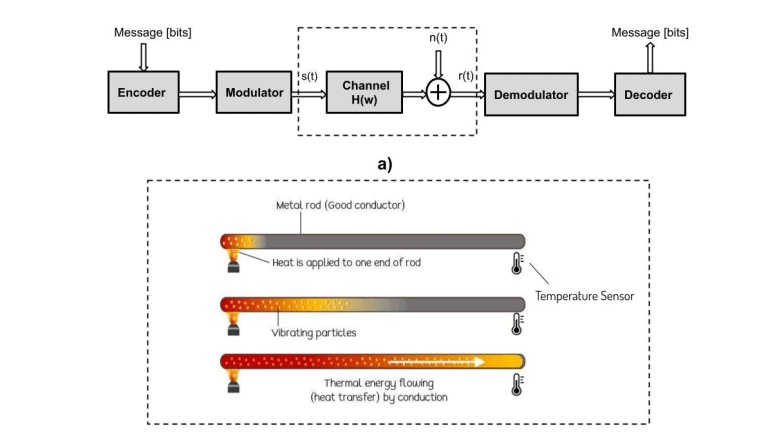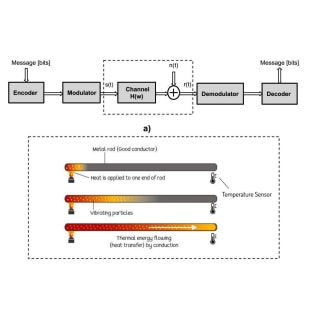Wireless Communications via Conductive Heat Transfer

NYU WIRELESS P.I.s
Research Overview
For purposes of communication, heat conduction is normally considered slow and sluggish. But the heat equation is a parabolic PDE. Going from a centimeter scale to a micron scale (x104) the temperature response speeds up by a factor of 108. Possible application: intra-chip communication through silicon.
The heat equation differs qualitatively from the wave equation, and the channel is unprecedented in communication theory. The system impulse response is diffusive in both space and time, and spatial attenuation increases drastically with frequency, so spectrum is not the precious resource that it is in electromagnetic communication. The characteristics of an electrical thermal source differ markedly between an ohmic transducer (which injects heat isotropically into the silicon but cannot withdraw heat) and a Peltier (thermoelectric) transducer which creates a differential temperature between two points, and which is, to some extent, thermodynamically reversible.
Research includes: 1) physical modelling of transmit and receive transducers, 2) determination of Shannon capacity for thermal channels, 3) the applicability of MIMO techniques, 4) a new modulation scheme (OFDM can’t be used because of infinite delay-spread!), and 5) the heat equation is known to be incompatible with special relativity – how to fix?
follow this research
*stay current with research in this area by completing this form

 2025 Brooklyn 6G Summit — November 5-7
2025 Brooklyn 6G Summit — November 5-7 Sundeep Rangan & Team Receive NTIA Award
Sundeep Rangan & Team Receive NTIA Award 2025 Open House
2025 Open House









